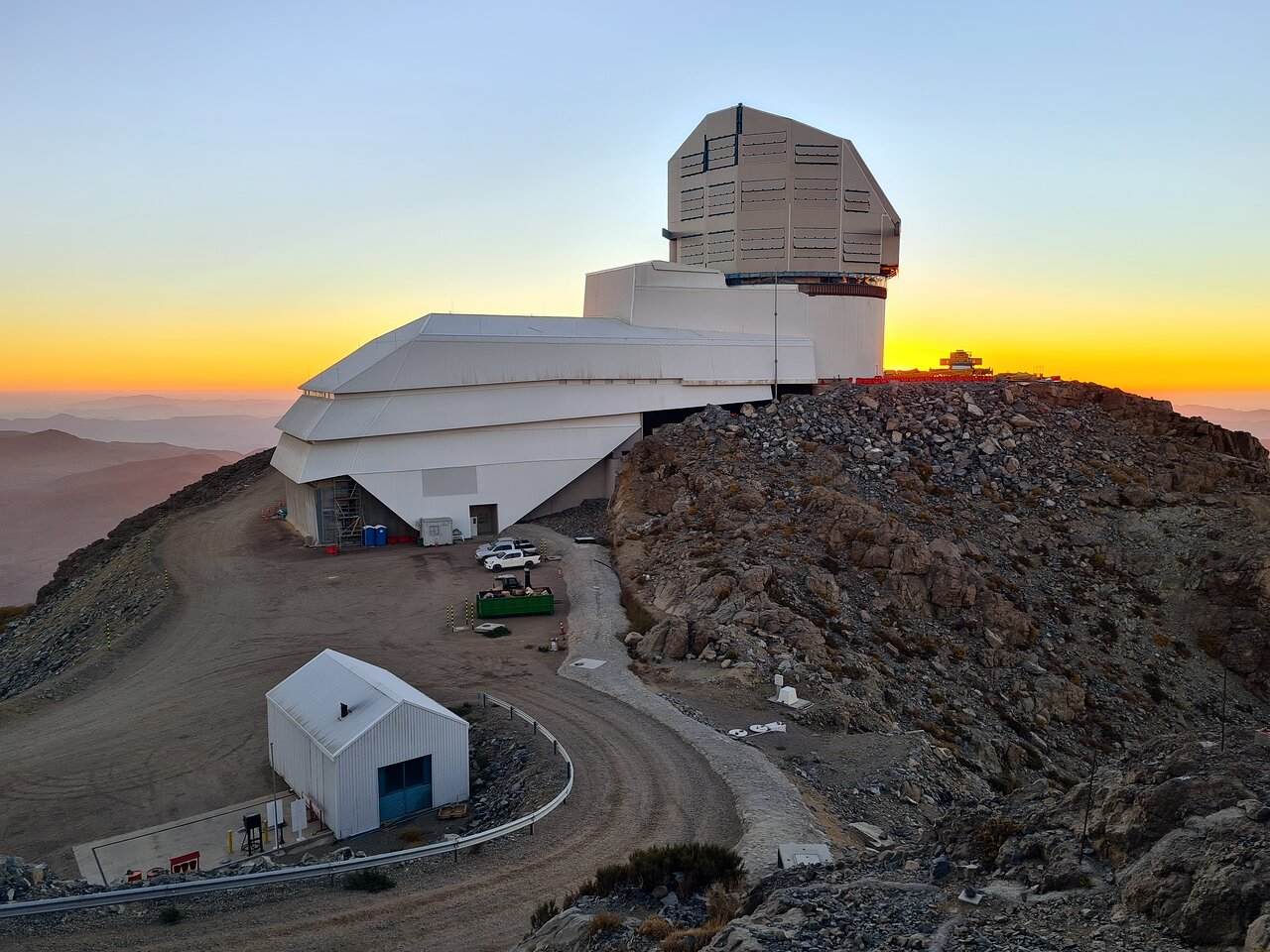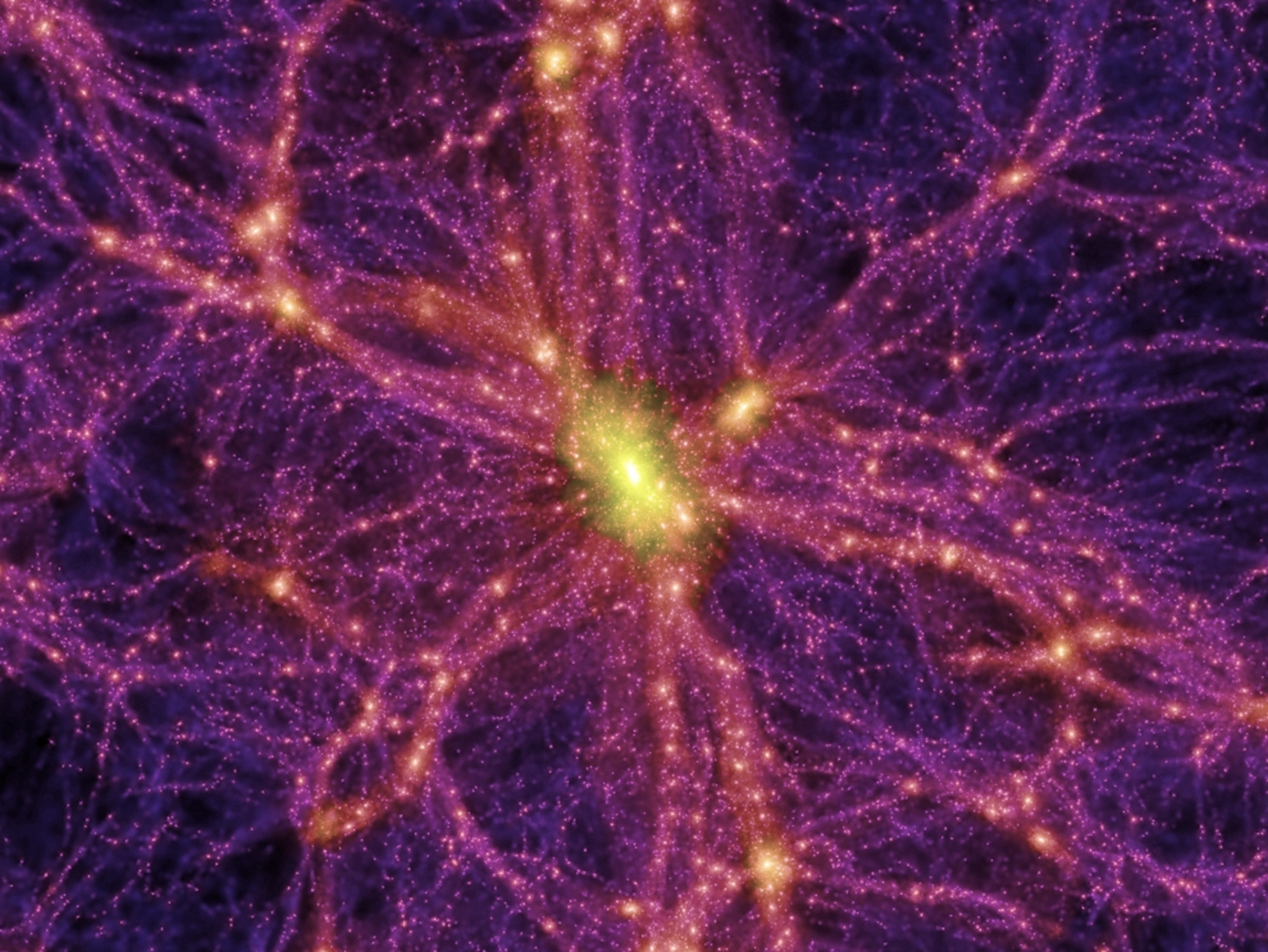Rubin Observatory stands on the frontier of astronomical innovation, poised to revolutionize our understanding of the universe. With its groundbreaking LSST Camera, the observatory aims to illuminate the invisible threads of dark matter while meticulously mapping the Milky Way. This ambitious project, known as the Legacy Survey of Space and Time, is designed to capture stunning astronomical images that will enhance our knowledge over a decade-long mission. At the heart of this endeavor is cosmic cinematography, where researchers will fuse wide-field views with high-resolution imaging to uncover the secrets of the cosmos. As we venture into this new era of astrophysics, Rubin Observatory promises to provide unprecedented insights into the fabric of our universe and the forces that shape it.
At the cutting edge of astronomical research, the Vera C. Rubin Observatory is set to enhance our understanding of the cosmos. This state-of-the-art facility, equipped with the largest astronomical camera ever built, will play a vital role in revealing the enigmatic nature of matter that eludes detection, commonly referred to as dark matter. The observatory’s mission, which encompasses a decade of diligent observation, involves the extensive mapping of our Milky Way galaxy through high-resolution cosmic imagery. By employing large-aperture and wide-field telescope technology, scientists will embark on a quest to document the ever-changing tapestry of the night sky, capturing everything from fleeting phenomena to distant celestial events. In this venture, the observatory not only aspires to unlock the mysteries of the universe but also democratizes this wealth of astronomical data for global scientific collaboration.
The Rubin Observatory: A New Era in Astronomy
The Rubin Observatory, a pinnacle of modern astronomical research, is set to revolutionize our understanding of the cosmos. As the centerpiece of the Legacy Survey of Space and Time (LSST), the observatory’s mission is to capture exquisite astronomical images that will unveil the mysteries of dark matter and energy. With its advanced 144-megapixel commission camera, initial on-sky images have already begun to illustrate celestial phenomena, signaling the beginning of a new chapter in cosmic exploration. Astronomers are excited about the powerful LSST Camera, designed with a resolution that exceeds any previously constructed camera, and will be pivotal in mapping the Milky Way like never before.
This project embodies a synergy of cutting-edge technology and innovative scientific methodology. As the telescope scans the night sky systematically over the next decade, it will gather vast quantities of data, enabling researchers to identify transient celestial events. This data will be crucial not only for astronomical discoveries but also for foundational physics. By studying patterns and anomalies in dark matter distribution across the Milky Way, scientists hope to gain insights into the composition and structure of the universe, paving the way for breakthroughs in cosmology.
LSST Camera: Capturing the Night Sky
The LSST Camera represents a leap forward in astronomical imaging capabilities, facilitating unprecedented studies of the night sky. Built to gather data across a broad spectrum of wavelengths, it will generate high-fidelity images essential for cosmic cinematography. This approach allows for detailed tracking of celestial events, from supernova explosions to asteroid movements. The significant increase in image size and quality, expected to be 21 times larger than the engineering camera’s output, will empower scientists to analyze more extensive sections of the universe simultaneously, unlocking new avenues for research.
The camera’s engineering incorporates sophisticated optics that are intended to address the challenges posed by faint astronomical objects. This configuration ensures that researchers can monitor gradual changes in celestial bodies or environments, leading to discoveries that would be difficult to make with traditional telescopes. The integration of such a powerful imaging component with the Rubin Observatory is anticipated to enhance our understanding of cosmic phenomena, including the investigation of dark matter’s gravitational influences on galactic structures.
Mapping the Milky Way: A Comprehensive Approach to Galactic Studies
One of the primary ambitions of the Rubin Observatory is to create a comprehensive map of the Milky Way galaxy. By employing the LSST Camera’s wide-field capabilities, the project aims to capture data that will illustrate the galaxy’s structure in unprecedented detail. This mapping effort is significant, as it will facilitate the study of our galaxy’s formation and evolution, providing critical insights into its constituent stars, planets, and other celestial bodies. The data collected over the 10-year survey will enable scientists to understand not only the dynamics of the Milky Way but also its relationship with surrounding galaxies.
Moreover, the Milky Way mapping initiative is expected to contribute to the ongoing research into dark matter and its role in shaping the galaxy. Understanding how dark matter interacts with known galactic structures will aid astronomers in formulating hypotheses regarding the vast cosmic architecture. In essence, the comprehensive map generated by the Rubin Observatory will serve as a foundational tool for both theoretical modeling and practical observation in the field of astronomy.
Cosmic Cinematography: Revolutionizing Scientific Discovery
The term ‘cosmic cinematography’ encapsulates the groundbreaking approach the Rubin Observatory employs in its astronomical observations. By taking advantage of the LSST Camera’s ability to capture large-scale, high-resolution images, astronomers intend to create dynamic timelines of the night sky. This innovative method involves taking multiple images over time, allowing researchers to observe changes in space phenomena, such as moving asteroids and variable stars. The accumulated footage will not only provide breathtaking visuals of the universe but will also serve as vital data for identifying celestial phenomena that might otherwise go unnoticed.
The concept of cosmic cinematography represents a shift from traditional static observations to a more fluid understanding of the universe’s dynamics. As researchers delve into the data collected through these time-lapse images, the insights gained will be instrumental in addressing significant astrophysical questions, including the nature of dark energy and its impact on cosmic expansion. The time-lapse methodology utilized by the Rubin Observatory will enable scientists to build a more nuanced understanding of the universe, fostering a deeper connection between astronomical research and the public.
Understanding Dark Matter Through Cutting-Edge Research
Dark matter remains one of the most enigmatic components of the universe, constituting nearly 90% of the Milky Way’s mass, yet eluding direct detection. The Rubin Observatory aims to bridge this gap through detailed observations and data analysis, seeking to illuminate the characteristics of dark matter and its gravitational effects on visible matter. The LSST project’s expansive data set will play a crucial role in this mission by examining the influence of dark matter on galactic formation and evolution.
Through its powerful new instrumentation, the Rubin Observatory is poised to enhance our grasp of dark matter’s role in shaping cosmic structures. By employing sophisticated algorithms on the extensive dataset expected from the LSST Camera, researchers can study the clustering patterns of galaxies, providing insights into the distribution and dynamics of dark matter across vast cosmic scales. Ultimately, this research may lead to groundbreaking discoveries that redefine our understanding of fundamental physics and the universe as a whole.
Educational Outreach: Making Astronomy Accessible
One of the most promising aspects of the Rubin Observatory’s project is its commitment to democratizing access to scientific data. Planned educational outreach initiatives aim to engage K-12 students and educators, providing them with resources and tools to understand and explore the night sky. By making all data generated during the LSST available to the public, the project endeavors to promote astronomy as an inclusive field of study while inspiring the next generation of scientists.
This emphasis on educational outreach not only aims to foster curiosity about the universe but also seeks to cultivate critical thinking and analytical skills among young learners. Through workshops, online platforms, and collaborative projects, the Rubin Observatory is committed to creating an environment where education and scientific inquiry go hand in hand, turning knowledge into action and engagement at all levels. The project’s dedication to public access underscores a transformative vision for science, where everyone has the opportunity to contribute to, and benefit from, the discoveries made about our universe.
The Future of Astronomy: Insights and Innovations
As the Rubin Observatory embarks on its ambitious 10-year survey, the future of astronomy is poised for unprecedented advancements. The interplay of the LSST Camera’s technological capabilities and the vast amount of data collected will enable new research pathways. Scientists anticipate leveraging machine learning and advanced analytics to sift through the astronomical data, extracting valuable insights about cosmic events that extend beyond current theoretical frameworks.
Additionally, the collaborative nature of the project, involving various institutions and scientists across the globe, fosters a culture of innovation and shared discovery. By pooling collective expertise and resources, the Rubin Observatory stands to enhance host countries’ scientific capabilities, driving a new era of global collaboration in astronomical research. Through these efforts, the observatory is not only broadening our understanding of the universe but is also solidifying its role as a hub for scientific education and communication.
Frequently Asked Questions
What is the aim of the Rubin Observatory’s LSST Camera?
The LSST Camera at the Rubin Observatory aims to create a comprehensive 10-year Legacy Survey of Space and Time project. Its primary goal is to capture astronomical images that will help map the Milky Way, detect cosmic phenomena, and enhance our understanding of dark matter and dark energy.
How does the Rubin Observatory contribute to Milky Way mapping?
The Rubin Observatory uses the LSST Camera to perform detailed mapping of the Milky Way. By capturing wide-field images of the night sky every few nights, it will gather data crucial for understanding the structure of our galaxy and the distribution of dark matter within it.
What kind of cosmic phenomena will Rubin Observatory help detect?
The Rubin Observatory is designed to detect a variety of cosmic phenomena, including supernovae, asteroids, and other transient events. The LSST Camera’s vast field of view allows astronomers to monitor changes in the sky, contributing to our understanding of dark matter and cosmic evolution.
How is dark matter related to the research conducted at Rubin Observatory?
Dark matter plays a vital role in the research conducted at the Rubin Observatory. The LSST Camera will allow scientists to study the gravitational effects of dark matter on visible objects in the Milky Way, helping to uncover its properties and influence on the universe’s expansion.
What is cosmic cinematography, and how is it applied at Rubin Observatory?
Cosmic cinematography refers to the method of capturing high-resolution time-lapse images of the night sky. At the Rubin Observatory, this technique will be utilized by the LSST Camera to produce comprehensive datasets that reveal cosmic changes, enhancing our observational capacities concerning dark matter and various astronomical events.
When will the first public astronomical images from Rubin Observatory be released?
The first public release of astronomical images from the Rubin Observatory is expected around mid-2025, following six months of commissioning the LSST Camera, which is the largest astronomical camera ever built.
How is Rubin Observatory facilitating open scientific data access?
The Rubin Observatory is pioneering a new approach by making all collected astronomical data freely available to the global scientific community. This open-data policy is aimed at encouraging collaboration and education, benefiting both researchers and K-12 students.
How will Rubin Observatory advance the study of dark energy?
With its state-of-the-art LSST Camera, the Rubin Observatory will enable precise measurements related to dark energy, which is a profound force driving the accelerated expansion of the universe. The data collected over the 10-year survey will enhance our understanding of this enigmatic component of the cosmos.
| Aspect | Details |
|---|---|
| Project Name | Legacy Survey of Space and Time (LSST) at Rubin Observatory |
| Camera Used | 144-megapixel Commissioning Camera |
| Milestone Achieved | First images of the night sky captured |
| Main Camera | LSST Camera, largest astronomical camera ever constructed |
| Project Duration | 10 years |
| Data Accessibility | Data will be made available to all scientists and educational outreach for K-12 |
| Focus Areas | Mapping Milky Way, studying dark matter and energy, and monitoring cosmic events |
| Philosophical Impact | Introduction of open data practices in astronomy |
Summary
Rubin Observatory represents a groundbreaking initiative in astronomical research. By leveraging cutting-edge technology like the LSST camera, it aims to uncover the secrets of the universe over a decade-long study, focusing on cosmic phenomena including dark matter and energy. The commitment to open data access reflects a significant shift in scientific collaboration, allowing a broader community to engage with and benefit from the findings. As Rubin Observatory continues to evolve, it promises to illuminate the night sky’s mysteries, shaping our understanding of the universe.



